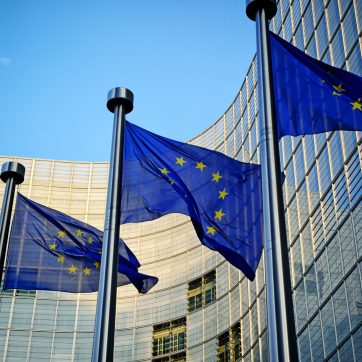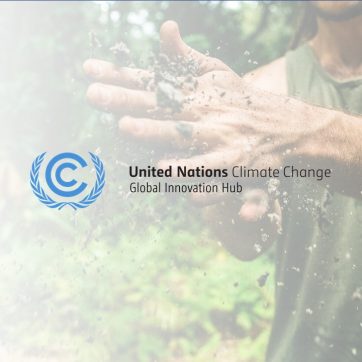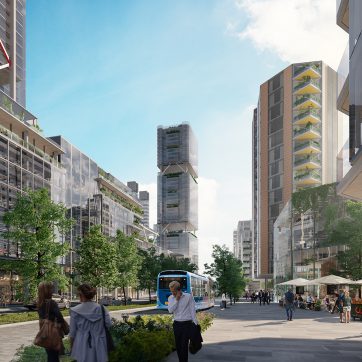
The time for a radical systems change is now.
‘Innovation-as-usual’ – typically siloed and focused on ‘supplying’ the market with technology-led solutions – is not delivering a 1.5 degree world. Getting real about 1.5 means that nations around the world will need to carve out ambitious pathways to zero along the safest – most ambitious – possible courses outlined in the latest IPCC Special Reports. To do this, we need a new model of innovation: one that is designed to generate options in the face of uncertainty and diversity, and to test for integrated and exponential solutions to address the complex, multi-faceted nature of the changes we need to make. Using systems innovation as a key tool to catalyse change in whole cities, regions, industries and value chains. We are already working with our Community of over 400 ambitious partners, a growing number of extraordinary funders and the European Commission to achieve exactly this.
Join us at COP26 and discover below highlights of our pioneering work in putting systems innovation into practice.

Demonstrating what’s possible: Healthy, Clean Cities
European cities face a critical challenge to move towards a zero-carbon economy by rapidly reducing their emissions. Future infrastructure must respond to both urban growth pressures and the need to change the way cities function if we are to create climate-resilient communities and limit global temperature rise to 1.5°C. This requires transforming entire systems through innovative solutions not only in terms of technology but also in social, economic and other areas.
EIT Climate-KIC has been supporting a cohort of 15 city governments across Europe in this challenge through the Deep Demonstrations Healthy Clean Cities Programme. Deep Demonstrations are the large-scale projects through which we offer systems innovation as a service to Europe’s most ambitious ‘challenge owners’ – i.e., the mayors, government ministries, industry leaders and funders who have the means and mandate to tackle Europe’s biggest climate change challenges.
The mission of Deep Demonstrations is to collaboratively develop portfolios of interconnected innovations capable of delivering widespread transformation across all urban systems – from mobility to waste, from energy to health and the built environment. At the heart of the Deep Demonstration methodology is readiness and intent to work differently, to strive for transformative outcomes and adopt a systemic approach. One of the main goals of our Deep Demonstrations is scalability to other locations that need systemic change on their path to sustainability.
To achieve this ambitious goal, we are partnering with European cities such as Madrid, Amsterdam, Copenhagen, Milan, Malmo and others.
EIT Climate-KIC is also working with the city of Vienna to identify climate initiatives and to link them systematically to go beyond incremental change. Vienna’s Deep Demonstration is based on the Austrian government’s commitment to have a carbon neutral Austria by 2040. EIT Climate-KIC is supporting the city of Vienna to meet this challenge by linking energy efficiency and other forms of district renewal with green infrastructure and green mobility.
In Poland, most energy is still derived from coal, resulting in high levels of air pollution and CO2 emissions. The residents of Krakow were the first in Poland to realise that a massive improvement in air quality was needed. This led them to join the Deep Demonstrations programme and take a series of actions towards decarbonisation.
The Deep Demonstrations of Healthy Clean Cities are not just about achieving zero emissions, but also about adaptation strategies, as in the Glasgow City Region which is hosting the COP26 conference this year. Scotland’s largest city faces major challenges such as frequent flooding and other extreme weather events. Glasgow’s Adaptation Strategy and Action Plan, which aims to ensure that the city’s economy, society and environment are more than prepared for the impacts of climate change, sets ambitious goals and aims to increase the resilience of people most vulnerable to the impacts of global warming.
With three-quarters of Europeans living in urban areas, it’s of key importance to drive cities fast to an inclusive and just, 1.5 degree world. Our model of system innovation uses a balanced portfolio of actions in education, technological innovation, civic engagement, policy, finance and other relevant levers of change to catalyse rapid decarbonisation and leaving no one behind in this process.
Selected snapshot stories to dive deeper into this topic:
Glasgow Edinburgh Vienna Krakow Rybnik Leuven Kessel-Lo Madrid | Amsterdam | MilanCitizen Climate Action Deep Demonstrations Explainer Video

NetZeroCities
NetZeroCities is a new European initiative aiming to lead European cities’ transition to net-zero emissions by 2030. Coordinated by EIT Climate-KIC, the four-year project will support cities in drastically cutting down greenhouse gas emissions to achieve climate neutrality, one of the biggest challenges our societies face today. NetZeroCities is funded by the Horizon 2020 Framework Programme, supporting the European Green Deal in building a low-carbon, climate resilient future through research and innovation.
As cities represent centres of economic activity, knowledge generation and hubs for innovation, they are envisioned to lead in achieving zero-carbon emissions and ensure that decarbonisation efforts are equitable and contribute to the well-being of communities. Cities will need to develop strategies that are tailored to suit local contexts: the project will support them by developing and promoting tools, resources, and expertise collated into a platform accessible to all cities through an online portal. In addition, NetZeroCities will support up to 30 pilots to help drive rapid learning about how to achieve climate neutrality in cities. The project is part of the Horizon 2020 Research and Innovation Programme and will directly support the targets of the European Union’s Green Deal and the EU’s Mission 100 Climate-Neutral and Smart Cities by 2030.
Launched in October 2021, NetZeroCities brings together a consortium of 33 partners including city networks, academia, think-tanks and businesses. Key activities include:
- Development of a service-oriented platform supported by world-class practitioners
- Co-creation of solutions needed to achieve net-zero goals in a socially inclusive way
- Capacity building on systemic change, citizen engagement and democratic governance, capital and financial structuring, and social innovation
- Development and promotion of new and existing tools, resources, and expertise into a one-stop shop platform that will be accessible to all cities through an online portal
- Support of up to 30 pilot cities to help drive rapid learning about how to achieve climate neutrality at the city scale
NetZeroCities is coordinated by EIT Climate-KIC, Europe’s largest public-private innovation partnership focused on climate innovation to mitigate and adapt to climate change, set up by the European Institute of Innovation and Technology (EIT). The project builds upon the expertise of its partners, leveraging a vast array of knowledge, as well as access to a very large network of cities throughout Europe.
Partners include:
- Associations & Networks: Climate Alliance, The Democratic Society, EIT Climate-KIC, EIT Urban Mobility, Energy Cities, ERRIN – European Regions Research and Innovation Network, Eurocities, ICLEI, Open & Agile Smart Cities, REGEA, Resilient Cities Network, Union Internationale des Transports Publics, Viable Cities
- Research organisations: Cartif, Cerema, Demos Research Institute, Fraunhofer Institute, Tecnalia, TNO, VTT Technical Research Centre of Finland
- Universities: Austrian Institute of Technology, Frankfurt School of Finance and Management, Politecnico di Milano, TalTech – Tallin University of Technology, Universidad Politécnica de Madrid
- Think-tanks: Institute for European Environmental Policy
- Companies and consultancies: Bankers Without Boundaries, Dark Matter Labs, LGI, Material Economics, Metabolic Institute, Rupprecht Consult, South Pole
Sign up for more information here:

The UN Climate Change Global Innovation Hub
Systems change is not possible without strong collaborations and global connections of communities. Therefore, EIT Climate-KIC is a core partner of the new UN Climate Change Global Innovation Hub led by UNFCCC. The initiative is centred around a platform that allows policymakers, financiers, corporates, civil society, technology providers across the different regions of the world to collaborate and co-innovate. By addressing holistically the different dimensions of an unmet demand for climate solution, the platform tries to complement the currently dominant incremental, sector-focused and problem-oriented approach to innovation with a transformative, need focused and solution-oriented approach. During COP26 in Glasgow, the UN Climate Change Global Innovation Hub can be experienced through conversations about the efforts being in made in cities, in land use, in food systems, in water management and in shelter to orchestrate and effect new systemic designs– in the real economy, with communities, in ecosystems and in our financial systems.
Changing the way we do innovation matters most in the yawning gap between our policy commitments to act, even our personal awareness of the need to do something, and the world of solutions already out there – the implementation gap, or what I call the messy middle. We have solutions. We have ideas. To some extent, we know how to use them but our habits of thinking, acting, investing, decision making do not lend themselves to joining the dots and connecting all those solutions into deliberately designed new social structures and whole systems change.
This is the work of orchestration, the coordination of the parts to form a new whole – like the coordination our nervous system does for the body. This is the work of active learning and conversion of innovation learning to policy. That “messy middle” is where we join our dots and change the rules and effect new systemic designs – needs to be just as much the focus of innovation, investment and policy as the invention of new ideas and new technologies. In the “messy middle” is where we reinvent ourselves.
At the physical UN Climate Change Global Innovation Hub in Glasgow, the work in that “messy middle” can be experienced through conversations about the efforts being made in cities, in land use, in food systems, in water management and in shelter to orchestrate and effect new systemic designs– in the real economy, with communities, in ecosystems and in our financial systems.
Launch Programme at COP26 The initiative will promote transformative innovations for a low-emission and climate-resilient future. It will expand the global innovation space by facilitating the development and implementation of climate and SDG solutions, that contribute to the satisfaction of the core human needs, through alternative value chains aligned with the climate and sustainability goals. It complements the current incremental, sector-based and problem-oriented approach to innovation for climate with a transformative, need-based and solution-oriented one, that leverages system change.
Specifically, the project will enable the development and deployment of solutions to:
- Build new value‐chains, products and markets aligned with the climate goals, displacing the existing carbon-intensive ones;
- Enhance the efficiency of consumption;
- Reduce waste within the entire value‐chain;
- Provide a collaborative platform where policymakers, financiers, corporates, civil society, technology providers across the different regions of the world can form clumps of climate innovators and co-innovate;
- Support climate solutions start-ups from the global South and provide a platform for the horizontal transfer of climate solutions from the global North and South.
To achieve these objectives, the Global Innovation Hub platform will host:
- A database for the demand of climate solutions;
- A database of climate solutions;
- A database of clusters of climate solutions addressing a specific demand;
- A framework measuring the contribution of a cluster of climate solutions;
- An Artificial Intelligence tool supported by human curation through digitized methodologies;
- A platform for the transfer of climate solutions as well as a virtual marketplace for the trading of integrated digital green bond and Mitigation Outcome Securities;
- Events such as virtual conferences, roundtables and virtual meetings of working groups.
Dive deeper into this topic:
UN Climate Change Global Innovation Hub Website News on Hub Launch at COP26

Building resilience with a systemic lens
EIT Climate-KIC has been selected to join the Race to Resilience, a UNFCCC High-Level Climate Champions campaign that aims to catalyse action by non-state actors by 2030, to build the resilience of 4 billion people from groups and communities who are vulnerable to climate risks. Some regions of Europe are particularly exposed to the impacts of climate change due to the make-up of their landscapes, economies and societies. EIT Climate-KIC’s programme, Resilient Regions Deep Demonstration, is devoted to bringing a systemic lens to climate change adaptation in Europe.
The programme uses a comprehensive approach to shift regions’ hazard-by-hazard risk reduction practices to a state where people, communities and systems can withstand and bounce back from shocks, to persist through slow-onset stresses and transform through crises. Early partners include regional governments in Andalusia, Nouvelle-Aquitaine, the Dolomites and the Glasgow City Region.
The Race to Resilience is the UN-backed global campaign to catalyse a step-change in global ambition for climate resilience, putting people and nature first in pursuit of a resilient world where we don’t just survive climate shocks and stresses, but thrive in spite of them.
Led by the High-Level Climate Champions for Climate Action – Nigel Topping and Gonzalo Muñoz – the Race to Resilience aims to catalyse action by non-state actors that builds the resilience of 4 billion people from vulnerable groups and communities to climate risks by 2030.
Through a partnership of initiatives, focus on helping the most vulnerable, frontline communities to build resilience and adapt to the physical impacts of climate change, such as extreme heat, drought, flooding and sea-level rise, in three area types:
Urban: Cities, industrial communities and informal settlements become healthy, safe and thriving spaces that support resilient livelihoods and allow for green recovery post COVID-19.
Rural: Smallholder farmers, rural entrepreneurs, and industries across food and agricultural supply chains are adaptive and are equipped to thrive in the face of climate change whilst protecting nature.
Coastal: Safeguard coastal and riverine cities, communities and businesses through increased investment in adaptation and resilience and protection of natural ecosystems that support those livelihoods and economies.
Dive deeper into this topic:
The Glasgow City Region in the Race to Resilience Climate Change Adaptation in Europe Race to Resilience Website

Teaming up with Laudes Foundation
For example, EIT Climate-KIC has teamed up with Laudes Foundation to lower embodied carbon in new buildings in two of Europe’s largest urban regeneration projects: Madrid Nuevo Norte and Milan’s L’Innesto. The two-year programme will mobilise a community of experts that will work with city leaders and policymakers, developers and designers, financiers and insurers, as well as citizen groups in a supporting role, to take a transdisciplinary approach to increasing the use of bio-based materials and circularity in buildings. An additional focus of the initiative will be to collect key learnings from the two urban development projects to scale positive action across other European capitals. This will ultimately result in the transformation of sustainable building practices in urban planning and construction at the pace and scale required to achieve net-zero carbon goals.
The project Healthy, Clean Cities (HCC EU CINCO) is part of EIT Climate-KIC’s Deep Demonstrations. It aims to meet the following key objectives:
- Reduction of Scope 3 emissions (embodied carbon) from the production of materials in the built environment.
- Exploration of potential solutions for increased circularity in the built environment.
- Redesign of supply chains in two regeneration projects in the cities of Milan and Madrid to increase the use of bio-based materials, sequester carbon and replace more polluting materials.
The project started in March 2021 and includes the following design partners: Bankers Without Boundaries, Dark Matter Laboratories, The Democratic Society, Material Economics; and implementation partners AMAT (Agenzia Mobilità Abiente Territorio), ARUP, Ayuntamiento de Madrid through Deputy direction of Energy and Climate Change, Distrito Castellana Norte, Comune di Milano, Politecnico di Milano, REDO, and Universidad Politécnica de Madrid through the Innovation and Technology for Development Centre (itdUPM).
Dive deeper into this topic:
climate impact

We need funding that matches our ambition
EIT Climate-KIC uses a portfolio approach to the development and deployment of innovation to achieve systemic change. We build portfolios of deliberately chosen innovations that work across technology, policy, finance, citizen engagement and other relevant levers of change. These portfolios test diverse ideas and approaches simultaneously in order to generate options and pathways for the transformation of whole systems and value chains.
We invite new funders to help shape and scale these portfolios for large-scale climate impacts.
Discover how to work with us! Contact us at fundraising@climate-kic.org

